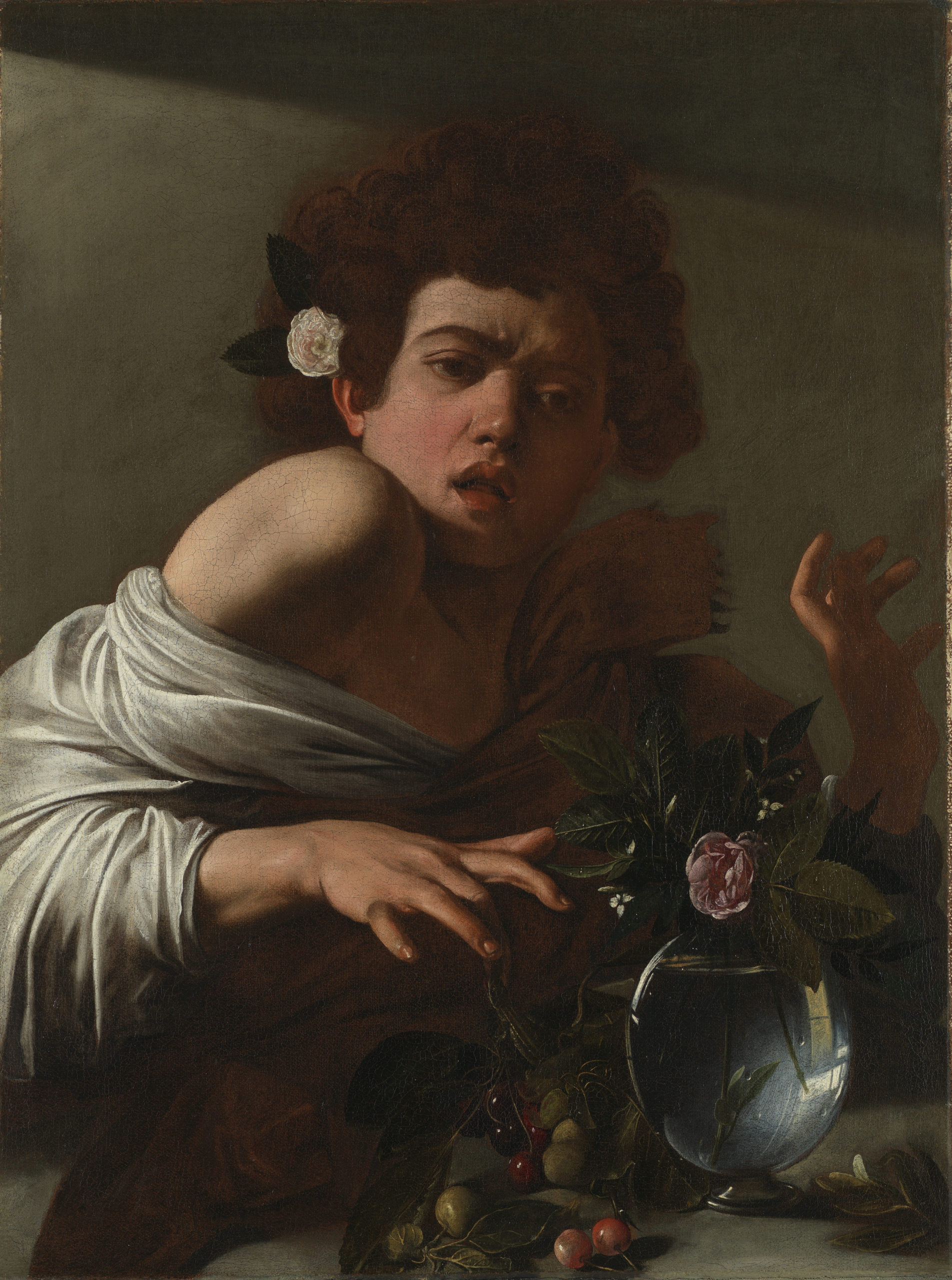Michaelangelo Merisi Da Caravaggio is one of the greatest painters who has ever lived. My favourite piece by him is St Francis in Meditation, which I first saw at the Convento Dei Capuccini museum in Rome (pictured below). This piece was painted circa 1606, some 10 years after Boy Bitten by Lizard. It represents St Francis of Assissi in deep prayer. One can see immediately from the proportion, use of lighting, depiction of torn fabric and emotion in the face of the Saint himself, that this is a piece of great artistic merit. It certainly struck me when I saw it.
I mention this because it bears similarity to Boy Bitten by Lizard. This earlier painting was the first in which Caravaggio depicted emotions in the face of his subjects. St Francis’ emotive face bears the hallmarks of Caravaggio’s earlier works.
According to Leonard J. Slatkes, the painting’s symbolism likely derives from the Apollo Sauroktonos theme in which a poisonous salamander triumphs over the god, while the arrangement of various fruits suggests The Four Temperaments, with the salamander being the symbol of fire in Caravaggio’s time. The salamander also had phallic connotations, and the painting might have been inspired by a Martial epigram: “Ad te reptani, puer insidiose, lacertae Parce: cupit digitis illa perire tuis. (Spare this lizard crawling towards you, treacherous boy/It wants to die between your fingers) Wikipedia
Boy Bitten by Lizard is an early masterwork in my eyes. From the reflection in the glass, allowing us perspective into the room’s surroundings, to the dew on the rose leaves and the sheen of the grapes – this is truly remarkable. But the focal point of this painting is the pained emotion on the subject’s face (thought to be Mario Minniti). This beautiful chiaroscuro dividing the face down to the shoulder amplifies the pain the subject feels when his hand is unexpectedly bitten by a lizard. This is a departure from Caravaggio’s earlier works such as as Boy Peeling a Fruit, Sick Bacchus and Cardsharps. These have been described as both airless and stiff by comparison. Observe the sheen on the nose, the intake of breath expressed in the models lips, the furrowed brow, the recoiling fingers on both hands. The shock is palpable and wonderfully rendered.
As an aside, it is believed the inspiration for this piece is Sofonisba Anguissola’s, Boy Bitten by a Crab (c. 1554), pictured below.
Overall, Boy Bitten by Lizard, is a masterwork. Do observe it in your spare time.



